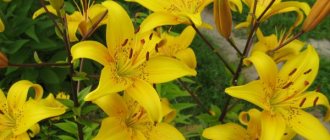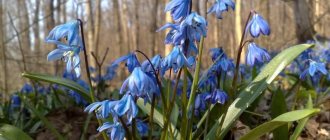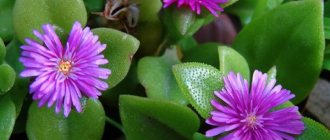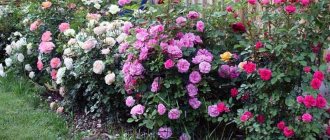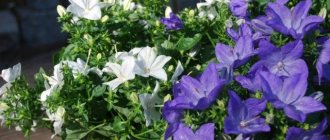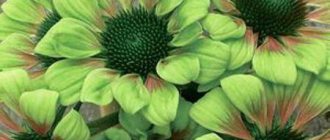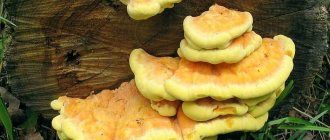Anacyclus
The plant really strongly resembles chamomile in appearance. The variety has about 10 subspecies , which are annual and perennial. The petals of the opened bud have a double color: they are white on the inside and pink on the outside. The flower reaches a diameter of 5 cm.
Basically, the varieties look like small bushes creeping along the ground. As a member of the aster family, anacyclus is subject to the solar rhythm: it opens at dawn and closes during sunset.
Arctotis
A rather tall crop, which sometimes grows up to 130 cm. In difficult conditions, the flower develops poorly and grows only up to 25 cm. The species is divided into two subspecies: stochafolium and hybrid.
Both named subspecies are characterized by unusual buds with petals colored red or bronze at the center with a gradual transition to yellow. The buds open only in sunny weather, and you won’t be able to admire them in the rain.
Venidium
These are white, pink, orange or yellow flowers similar to daisies. They have a brown or dark red core. When open, the bud reaches 10 cm in diameter , and the length of the stem is between 70-80 cm. The species is rarely grown in open ground, more often it can be found in home pots and flowerpots. Flowering begins at the end of June and continues until the end of September.
Gatsania
The flower has an incredible variety of shades: yellow, lilac, red, orange, etc. There are also two-color and striped varieties. Externally, gatsaniya really resembles a chamomile, only with brighter and more colorful petals. Gradient varieties, where one color gradually gives way to another, do not allow you to take your eyes off the bush.
Under natural conditions, there are about 40 species that are resistant to frost, direct sunlight, drought and high temperatures. Flowering starts at the beginning of summer and continues until night frosts. The height of the bush is within 30-40 cm. The flower retains its appearance for a long time after cutting.
Gatsania is grown in open ground, pots and flowerpots. It combines well with other plants in the flowerbed and looks impressive when planted alone. The species is used to decorate paths, borders and rock gardens.
Chamomile-like flowers
You can often find flowers whose appearance resembles a chamomile. Even experienced flower growers sometimes find it difficult to determine the type of ornamental crop. The descriptions below will help you recognize the plant.
Felicia – flowerbed decoration
Blue daisies
Blue chamomile belongs to the category of plants of the Asteraceae family. Flowers are widespread throughout South Africa. Experts call the perennial felicia. In our climatic conditions, it is possible to grow the South African plant as an annual crop.
Note! Blue daisies are grown near borders, rocky gardens or along paths.
Landscape designers plant felicia in flower beds with beautiful yellow flowers. Blue chamomile inflorescences are used in the preparation of cosmetics. In appearance, Felicia resembles a white garden chamomile. Blue flowers contain purple hues and a yellow center.
The height of felicia reaches 25 cm. The stems are covered with a large number of small leaf blades. The diameter of the flowers is within 5 cm. Flowering is characterized by abundance and duration.
Aster
Aster belongs to the category of herbaceous perennials belonging to the Compositaceae family. There are almost 200 species in the genus. The leaf blades of the aster are simple. Bushes can grow up to 10-150 cm. The inflorescences consist of petals of various lengths, reminiscent of tongues in shape. They can be painted in various shades:
- white;
- pink;
- crimson;
- lilac, etc.
Interesting! Flowers like daisies are often grown along garden paths.
Cineraria
Cineraria is an ornamental crop characterized by bright flowering and silvery leaf plates. Plants are used by landscape designers to plant flowers and areas around the house. The colors of the petals can be very diverse, which allows each gardener to choose a plant to suit his taste. This unpretentious crop does not require complex care and can be grown at home. Flower pots are placed in the hall.
The height of the bushes can reach 35-90 cm. The tap root system is buried quite deep into the soil. The lyre-shaped petiolate leaf plates are naturally endowed with pinnately dissected outlines. On the surface of the foliage you can see soft fibers of a silver-blue hue. Flowering begins in mid-summer. At this time, the bushes are literally dotted with basket-like inflorescences, which can be either simple or double. Flowers can be painted in different colors:
- yellow;
- white;
- red;
- purple.
Flowering pleases the owner of the site almost until October.
Cineraria as a houseplant
Osteospermum
Osteospermum belongs to the category of herbaceous plants with large flowers. The second name for a flower similar to chamomile is African chamomile. During flowering, lilac-pink baskets with a purple central part bloom on the bushes. The African chamomile flower is characterized by long and abundant flowering. The herbaceous crop is grown as an annual. Strongly branching shoots can form a ball or grow rapidly upward. The height of the bushes is in the range of 100-145 cm. Oval leaf plates of oval shape are characterized by increased density.
Note! Scent glands are located on the foliage, due to which the plant emits a tart aroma.
White flowers similar to daisies
Below you can see the most popular white flowers, which resemble chamomile in appearance.
Anacyclus
Anacyclus belongs to the category of perennial or annual creeping crops, the height of which does not exceed 10-12 cm. As the flowers grow, a voluminous carpet is formed. The foliage of the plant is finely dissected. It is painted in dark green tones. You can admire the blooms throughout the summer. Bushes should be planted in well-lit areas with well-drained soil. For propagation, you can use the seed or vegetative method. Landscape designers plant anacyclus when designing rock gardens and ridges.
Orange daisies
Kozulnik is considered the best colored chamomile. The herbaceous perennial is endowed with a naturally fibrous superficial rhizome.
Doronicum (kozulnik)
Florists often call Doronicum sunny chamomile or roe. A representative of the Asteraceae family is widespread throughout North Africa. The culture does not require complex care. The unpretentiousness and vitality of the goat is the main advantage of the variety. Erect stems do not branch well enough. The height of the bushes can reach 35-100 cm.
Doronicum is a perennial herbaceous plant. It has a fibrous superficial rhizome. Strong, erect stems branch weakly. They grow 30-100 cm in height. Short pubescence can be seen on branches and leaf blades. The outermost parts of the stem foliage are covered with glandular formations. Yellow chamomile, whose name is Doronicum, is distinguished by the formation of single or grouped corymbose inflorescences.
Kozulnik
Pink daisies name
The most spectacular representative of pink daisies is considered to be pyrethrum, a description of which can be found below.
Pyrethrum
A perennial crop belonging to the Compositaceae family, it is distinguished by the formation of herbaceous shoots. The core of the flowers of this unpretentious plant is quite lush. Pyrethrum not only decorates the area, but also helps repel harmful insects. The perennial is endowed with a naturally fibrous root system. The length of erect herbaceous shoots reaches 55-70 cm. The foliage is pinnately dissected and colored in bright green tones. The diameter of the inflorescences is in the range of 30-60 mm.
On a note! The duration of flowering of pyrethrum (Caucasian chamomile) reaches 40-60 days.
Small daisies - what are they called?
The most popular small daisies are anemone and argyrantemum. Below is a description of each of these plants.
Anemone Blanda
Anemone Blanda belongs to the category of mountain flowers, which are common in the Caucasus and Asia Minor. Flowers are planted in nutritious limestone soil. The height of the plant barely reaches 20-25 cm. The carved foliage looks quite impressive. The diameter of the inflorescences is within 6-7 cm. Flowering duration is 21 days. The petals are painted in blue and blue tones.
Argyrantemum
Argyranthemum is often called daisy chrysanthemum. Experts distinguish about 20 species of plants. The shrub type is considered the most popular among gardeners. The height of the bushes reaches 30-100 cm. The pinnately dissected foliage is painted in silver or bright green shades. The flowering period begins in mid-summer. The shape of the petals is similar to a chamomile both in shape and color.
Helichrysum daisy flower
Helichrysum daisy flowering is an ornamental crop, the height of which does not exceed 8 cm. In the area of short peduncles, white inflorescences and small pubescent gray foliage are formed. Flowering begins in the first weeks of summer.
Helichrysum daisy flower
Mesembryanthemum
Mesembryanthemum is a plant that belongs to the class of succulents. The height of the bushes can reach 15-16 cm. The heat-loving crop should be planted in well-lit areas with sandy soil. The erect stems are highly branched. The leaf blades are planted quite densely and are painted in a pale green palette. The foliage is arranged in an opposite manner in the lower part of the bush and alternately in the upper area.
Big daisies
What are the names of the large daisies that can often be found in flower beds? It is worth considering descriptions of plants that fall into this category.
Gerbera
Gerbera is a bright representative of the Asteraceae family. Decorative culture prefers areas well lit by sunlight. Gerbera petals come in different shapes:
- tubular;
- pointed;
- curly
Petals can be painted in a variety of colors.
Gerbera
The plant is similar in structure to a chamomile, but has purple, yellow, cherry, orange, cream and classic white petals. Such diversity attracts gardeners; resistance to adverse conditions, as well as wide possibilities for use in bouquets, also play an important role.
There are double gerberas, and their numerous petals are tubular, curly and pointed. The species is grown outdoors and at home. Flowering starts in the summer months and lasts until November. The exact dimensions of the bush and the open bud depend on the variety.
Doronicum
The second name of the species is Kozulnik. There are about 40 varieties, but often only 10 are used. The height of the bush varies in different varieties from 0.5 to 1 meter. The flowers are yellow and quite large - the diameter reaches 10 cm. Flowering begins in May and lasts on average 1.5 months. At the same time, the plant can be pleased with the repeated release of buds in mid-summer or early autumn.
When cut, the flower retains its attractive appearance for a long time. You should know that the plant is poisonous. It is not recommended to plant Doronicum under trees - it will be suppressed.
Planting and care
Chamomile is best propagated by seeds. It is allowed to sow them in open ground, but it is also possible for seedlings.
Sowing chamomile
Andalusian blue chicken breed
To obtain seedlings, seeds are planted in March. Before this, they need to be kept in the refrigerator for about 3 weeks. Planting in open ground begins in mid-May. To do this, prepare holes in the soil and sow 3 seeds there. The holes are made at a distance of 30 cm. Shoots will appear in 14 days if the temperature is about 20°C, and flowering will begin in 6 weeks.
Important! The area for this crop should be sunny, fertile with light soil. On a summer afternoon, it is advisable to shade the plant.
Further care for this flower consists of regular watering. Dry soil is a sure sign that the plant needs moisture. During drought, watering is increased. Chamomile planted in containers should be irrigated regularly.
Dry stems and flowers need to be torn off. Summer residents recommend pinching the plant to stimulate the appearance of new flowers.
Important! A special feature of this plant is that cloudy weather will not allow the flowers to open; they will be closed until the sun appears.
Chamomile needs feeding once every 3 weeks. Complex formulations for ornamental crops are suitable for fertilizer. Thanks to them, the flower will be resistant to the first frosts, this will not affect its flowering. But it is important to remember that too fertile soil can stimulate the growth of green mass to the detriment of flowers.
For your information! Many gardeners grow blue chamomile as a houseplant, which they take outside in the summer.
Calendula (marigold)
The following daisy-like flowers are incredibly popular among people who have a local area. They belong to the Astrov family and are distinguished by their unpretentiousness to external conditions. Depending on the variety, the bush grows from 20 to 65 cm in height .
The open buds are quite compact, the petals are deep orange. Having planted marigolds in the garden once, you will not need to buy seeds for the next year - the plant actively reproduces by self-seeding, and if its spread is not limited, it will quickly occupy the entire free territory.
Other flowers
Gardeners know many flowers that are similar to chamomile, but not with white, but with very bright petals.
Arctotis
A member of the Asteraceae family, it is endemic to the Cape region in Africa. Arctotis is a herbaceous plant or subshrub. It is characterized by dense silvery pubescence on the leaves. The basket inflorescences reach 8 cm in diameter. Painted in white, purple, pink colors.
Arctotis
Coreopsis
A yellow or golden brown daisy whose name is translated from Greek as “a type of bug.” Coreopsis blooms in late summer and early autumn. Herbaceous plant or subshrub, height from 20 to 60 cm depending on the variety.
Kinds:
- coreopsis grandiflora;
- coreopsis lanceolate;
- coreopsis whorled.
Coreopsis
Perennial sunflower
Sunflower appeared in Europe in the 17th century. Over three centuries of selection, the original inconspicuous plant has turned into an oilseed crop and a garden decoration.
The ten petal sunflower variety is the most decorative. Golden balls of inflorescences look more like a chrysanthemum than a sunflower. This is a tall perennial, reaching 2 meters in height. It is unpretentious in care and responds gratefully to feeding.
Sunflower
Cosmea
The pink and white cosmos flowers with ruffled petals are familiar to many. Undemanding to care, it will decorate any flower bed and border. The light green, light, pinnately dissected leaves of this plant create a “cloud” on the surface of which stars of inflorescences are scattered. In some varieties of cosmos, the double-pinnate inflorescences can be up to 10 cm in diameter.
Varieties:
- Dazzler;
- Purity;
- Radiance;
- Bilbo.
Cosmea
Among the many plants similar to chamomile, each gardener will choose which one to plant on his site. The choice of type and variety, in addition to preferences, depends on the ideas of the master designer, his goals and objectives.
Coreopsis
The flower has yellow petals with a jagged edge and brown spots at the base. Pedicels grow up to 60-100 cm in height, depending on the variety. The diameter of the opened bud is within 3-7 cm. Flowering begins in mid-summer and lasts 2-2.5 months. Flower baskets can be regular or double, and the shade of the petals also varies.
The crop is suitable for growing in large front gardens and massive flower beds.
Low-growing "daisies"
Flowers from this selection are grown in borders, mixborders, and at the foot of rock gardens. They are also suitable for growing in pots and decorative compositions.
| Anacyclus (anacilus) | |
| The height of this plant does not exceed 5-10 cm. Anacyclus has creeping shoots that are arranged in a circle and form clumps. Flowering occurs in May-June. The inflorescences are white with a yellow center or completely yellow. The perennial Anacyclus depressum has dark pink outer ligulate flowers, like all the buds. During rain and at night, the flowers close. The flower requires a sunny area with well-drained light soil. | |
| Arctotis short-stemmed, stemless, hybrid | |
| Various varieties of hybrid, stemless, short-stemmed arctotis are often grown in culture. Their height usually does not exceed 15-20 cm. The colors are varied: from white to deep purple. The plant loves well-lit areas. They grow best on rocky soil. They are drought and cold resistant. They bloom from July to September. | |
| Gatsania | |
| Gatsania (gazania) is a perennial southern plant, which in the middle zone is usually grown as an annual. Depending on the species, it blooms from early summer to mid-autumn, until the onset of frost. The height of gatsania usually does not exceed 30 cm. It is suitable for growing in containers - in this case it can be grown as a perennial. It looks decorative due to the variety of color options. On sale you can find many varieties with variegated petals. Easily propagated by seeds and cuttings. Drought-resistant, can withstand frosts down to -7 °C. | |
| Helichrysum daisy flower | |
| Helichrysum of this species is a low-growing perennial that forms a clump up to 50 cm in diameter and up to 8 cm in height. White inflorescences, similar to daisies, rise above a mat of bluish leaves on low peduncles. Daisy-flowering helichrysum blooms all summer, from June to August. This plant grows very quickly and does not have any special care requirements. | |
| Doronicum Clews | |
| Doronicum Clews grows up to 10-30 cm in height. Inflorescences with a diameter of 3-6 cm are similar to chamomile, bright yellow. Blooms in July-August. Winter-hardy, loves open sunny places. Prefers loose, well-drained, fertile soil. | |
| Calendula officinalis | |
| Calendula officinalis can grow up to 70 cm, depending on the variety, but it cannot be called a tall “giant”. The average “height” of calendula is 20-50 cm. Propagates by self-sowing. Unpretentious. Used for making herbal teas. Calendula repels many pests, so it is recommended to plant it along the beds. | |
| Cosmea bipinnate | |
| A herbaceous annual that forms spreading bushes up to 50 cm high. The color range is varied: there are varieties with pink, purple, burgundy petals. The inflorescences are very large, sometimes exceeding 10 cm. Propagates well by self-sowing. Can be grown in containers on balconies and patios. | |
| Coreopsis pink | |
| The height of pink coreopsis is up to 40 cm. The bushes are quite lush and spreading. The inflorescences are small - up to 2 cm in diameter. Depending on the variety, they are pale or bright pink. This perennial grows well in one place for several years. For planting, choose well-lit areas with loose, light, fertile soil. Blooms from July to September. To increase frost resistance, after flowering the above-ground part of the plant is cut off. | |
| Perennial daisy | |
| The height of daisy bushes does not exceed 30 cm. Unpretentious, but needs regular hydration. The optimal soil type is light loam rich in humus. Tolerates partial shade. There are varieties with different colors of inflorescences: Beethoven (pink), Schneebal (snow-white), Rob Roy (red), Etna (dark pink), etc. There are also varieties with an unusual shape of inflorescences: the Tasso and Rominette series (pom-pom inflorescences), the Habanera series (lancet inflorescences). | |
| Ursinia dwarf | |
| The height of dwarf ursinia is only 8-15 cm. The inflorescences are light orange. The center of the flower is darker, ocher. Flowering lasts from July to September. For ursinia, well-lit, drained areas are selected. Can be grown in containers. | |
| Arctic chrysanthemum | |
| One of the shortest types of chrysanthemums - up to only 30 cm in height. Flowering is very late, falling in autumn (from late September to November). Inflorescences similar to chamomile can be either white or another shade. It grows quickly. Forming curtains. Loves humus-rich soils and sunny areas. Frost-resistant. | |
| Chrysanthemum Korean | |
| Korean chrysanthemums are a group of hybrid chrysanthemums whose flowering time, growth, color, inflorescence shape and other features vary depending on the variety. The height of Korean chrysanthemum bushes does not exceed 30-50 cm. As a rule, flowering occurs in late summer - autumn. These chrysanthemums are planted in well-lit, windproof areas. | |
Cosmea
The plant often evokes associations of summer warmth and comfort. Its distinctive feature is its low maintenance and self-seeding. Once you remember what these colorful daisies are called and look like, they can be distinguished in private flower beds, as tapeworms on lawns, in city park areas and along borders. A lush carpet of greenery and bright buds will decorate the garden, covering bare areas of the territory and emphasizing straight lines.
The crop easily copes with prolonged drought and heat, is undemanding to the presence of various substances in the soil, and is resistant to frost. The petals come in many shades of red and purple, and white varieties are also found. The buds are located on straight stems growing within 0.7-1.5 meters. Cosmea is used as a tapeworm and in the company of other plants. If there are empty spaces in the flowerbed, this flower often saves the day, since it manages to easily and quickly cover all the flaws.
Nivyanyk
In fact, this is chamomile, namely its garden variety. Nilet belongs to the aster family and is often grown in our gardens. It is chosen due to the lack of special requirements for care, soil, and watering. It tolerates frost well. The bush grows up to 120 cm, the exact figures depend on the variety.
Flowering is accompanied by the opening of a white bud up to 10 cm in diameter with a yellow center. The process is repeated twice during the summer season: in May or June, and a second time in August or September.
How to choose a flower that looks like a daisy?
Among the listed variety, every daisy lover will find a suitable option. The choice depends on the properties of the varieties, preferences in colors and plant size. Chamomile-like flowers come in different colors, heights and even types (grass, shrubs) . They are selected for any ensemble in a flowerbed and they will last for many years, delighting with bright colors and long-lasting flowering.
People call yellow daisies many different plants, which in fact have completely different names and belong to other genera and families. None of these plants are true daisies. True daisies are only representatives of the genus Matricaria, of which there are about 25 species. However, none of them are completely yellow. For example, the inflorescences in the photo below do not belong to true daisies:
All plants of yellow, orange, brown, pink and other shades are called daisies only in everyday life. Most of them belong to the Asteraceae family, which includes about 30 thousand species of plants with the characteristic appearance of inflorescences (mistakenly called flowers). Many of them are visually similar, and since it is difficult to remember all the correct names, they are simply labeled with yellow, blue or other daisies, depending on the color.
A meadow overgrown with cinnamon grass.
It should be taken into account that chamomile is most often used for medicinal purposes. None of the flowers called yellow daisies have found their use in pharmacology. However, some of them are used for decorative purposes, as well as in households for pest control.
Osteospermum
These flowers are exactly like daisies, only with purple or red petals. The varieties with white flowers are especially similar. It is recommended to plant in open areas exposed to direct sunlight. At the same time, osteospermum shows high resistance to life in regions where cloudy and rainy weather prevails.
The crop is grown in the form of annual or perennial plantings. The height of the bush varies between 25-100 cm, the opened bud reaches a diameter of 4-10 cm.
Pink and white flowers similar to chamomile
Flowers, white and pink, add tenderness and sophistication to the colorful flower garden. You can create compositions from them, shading pink with white, and a group of just white against a background of dark greenery will add elegance.
Related article:
6 of the most spectacular varieties of daffodils that are guaranteed to decorate every garden
Arctotis
The varieties and varieties are represented by such a palette of colors that you can decorate the entire territory with only arctotis - the South African analogue of chamomile. Each peduncle bears one large flower up to 8 cm in diameter. The bluish-silver leaves add decorativeness. Low-growing (15 cm) varieties are planted in the foreground of medium-tall and tall crops, and tall (up to 1 m) varieties are suitable for creating a background for ground covers and beautiful compositions with deciduous perennials.
Cosmos
It is a very convenient plant to grow because it reproduces well by self-sowing and you don’t have to worry about sowing a clearing or an empty area of the garden. Chamomile-like simple or double multi-colored flowers will flaunt on tall stems all summer.
Osteospermum
A hardy, beautifully flowering garden crop with a basket-shaped inflorescence (4-10 cm), the corollas of the marginal flowers are white, pink, yellow, orange, purple, violet. In cloudy weather, the petals close to protect the pollen. Blooms continuously all summer. In temperate climates it is grown as an annual.
Related article:
How to pinch petunia so that it blooms beautifully?
Pyrethrum
Most pyrethrums resemble a snow-white chamomile with a wide yellow center; some resemble a daisy. The culture is unpretentious, resistant to frost and tolerates wintering well under cover; it reproduces well by dividing the bush. Low-growing species are used to decorate balconies and terraces; tall species are grown for cutting, decorating the edges of lawns and borders.
Pyrethrum
Another double of the chamomile, which is a highly branching bush, 20-50 cm high. The opening buds can reach 8 cm in diameter, their petals are colored white, pink, crimson, red and lavender. The flower is grown as an annual and perennial crop and has an effective ability to self-sow. Planting is possible in almost any soil, but waterlogging and stagnation of water should be avoided.
Flowering begins in May and continues for a long period. The aroma is strong and quite specific.
Big daisies
Daisies with baskets up to 15 cm in diameter look impressive both in a flowerbed and in a bouquet. What are large daisies called?
Gerbera
Herbaceous perennial plant. Often used in making bouquets. Can be grown on the plot and at home. Gerbera is native to tropical Asia, South Africa and Madagascar. It is sometimes called the Transvaal daisy.
The height of gerbera peduncles can be up to 60 cm. The rosette of leaves is low, located near the ground. The leaves are smooth, leathery, dark green.
Gerbera blooms from August to November. The petals are painted in a wide variety of colors and shades: from white to dark burgundy, collected in a double or triple row along the edge of the basket.
There are a lot of types and varieties of gerbera, the most common ones can be found:
- Gerbera Jameson;
- green-leaved gerbera (common);
- hybrid gerbera: Festival variety;
- Alcor variety;
- variety Jupiter;
- variety Mars.
Transvaal chamomile is propagated by seeds, dividing the bush, and cuttings. Used in borders, mixed flower beds, and as a tapeworm. Gerberas are also grown as house flowers.
Gerbera
Rudbeckia
The flower belongs to the tall category, the minimum height of the bush is 50 cm, and the maximum reaches 2 meters. The plant has no special care requirements; moreover, it is perennial and can decorate the garden in one place for up to 5 years.
The daisy-like flowers come in yellow, pink, scarlet, orange and cream. There are two-color species, where the darker base becomes lighter as it approaches the edge of the petal. There are 40 varieties in total.
Ursinia
The shape of the flower is similar to a chamomile, but the color of the petals is very different. They are mostly golden with a hint of orange. The color is bright and rich, easily attracting attention. It is noteworthy that the inside of the flower is lighter than the outside. For example, a petal that is yellow on the inside will be brownish-purple on the back. The opened buds have a diameter of 5-6 cm.
The shoots grow up to 30-60 cm, covered with dark green foliage. The crop is grown both annual and perennial. It is resistant to negative temperatures and is undemanding to living conditions. Flowering continues until night frosts appear.
Chrysanthemum
A perennial or annual plant with many varieties. Flowers are located on a separate stem or are included in massive inflorescences. The petals are cream, lilac, yellow, purple and lilac. The height of one branch varies depending on the variety, in rare cases it can grow up to 160 cm. The plant is stable after cutting.
The chrysanthemum variety Bacardi deserves special attention. You should remember the name and look at the photo, because chamomile-like flowers can be used to create a wide variety of compositions. The variety has white, densely set petals and a yellow center, which together gives an incredible similarity. There are up to two dozen buds on one large stem, so literally 3-5 branches allow you to form a lush, beautiful bouquet.
In addition to the standard color, the petals can be red, yellow, pink, or cream. This flower is popular among florists - its inflorescences are painted in various shades, sprinkled with sparkles, and decorated with ribbons.
The Bacardi variety is grown outdoors and at home. It is placed on sunny lawns and provides abundant watering.
Feverfew
A popular flower of the Asteraceae family. It can easily be confused with chamomile due to its saucer-shaped inflorescences with white petals and a yellow center. The first buds bloom in May.
The flower develops well both in sunny places and in the shade. Young plants can withstand even mild frosts. When planting, you do not need soil of a specific composition; the main thing is to avoid excess moisture.
Echinacea
A perennial with properties beneficial to the human body. There are only 10 types of Echinacea, the most popular of which is purple. Its petals can be not only purple, but also red, cream and yellow. The daisy-like flowers consist of slightly downturned petals and a convex center.
The height of the stem in some cases reaches 140 cm. Reproduction occurs by seed and vegetative methods. Flowering begins in mid-summer and continues until September. The plant produces buds from the second year of life.
It is recommended to plant in sunny areas; shade and even partial shade are unacceptable. There are no special requirements for the soil; only light sandy soil will not work. Echinacea grows in one place for about 5 years, then a transplant will be required.

